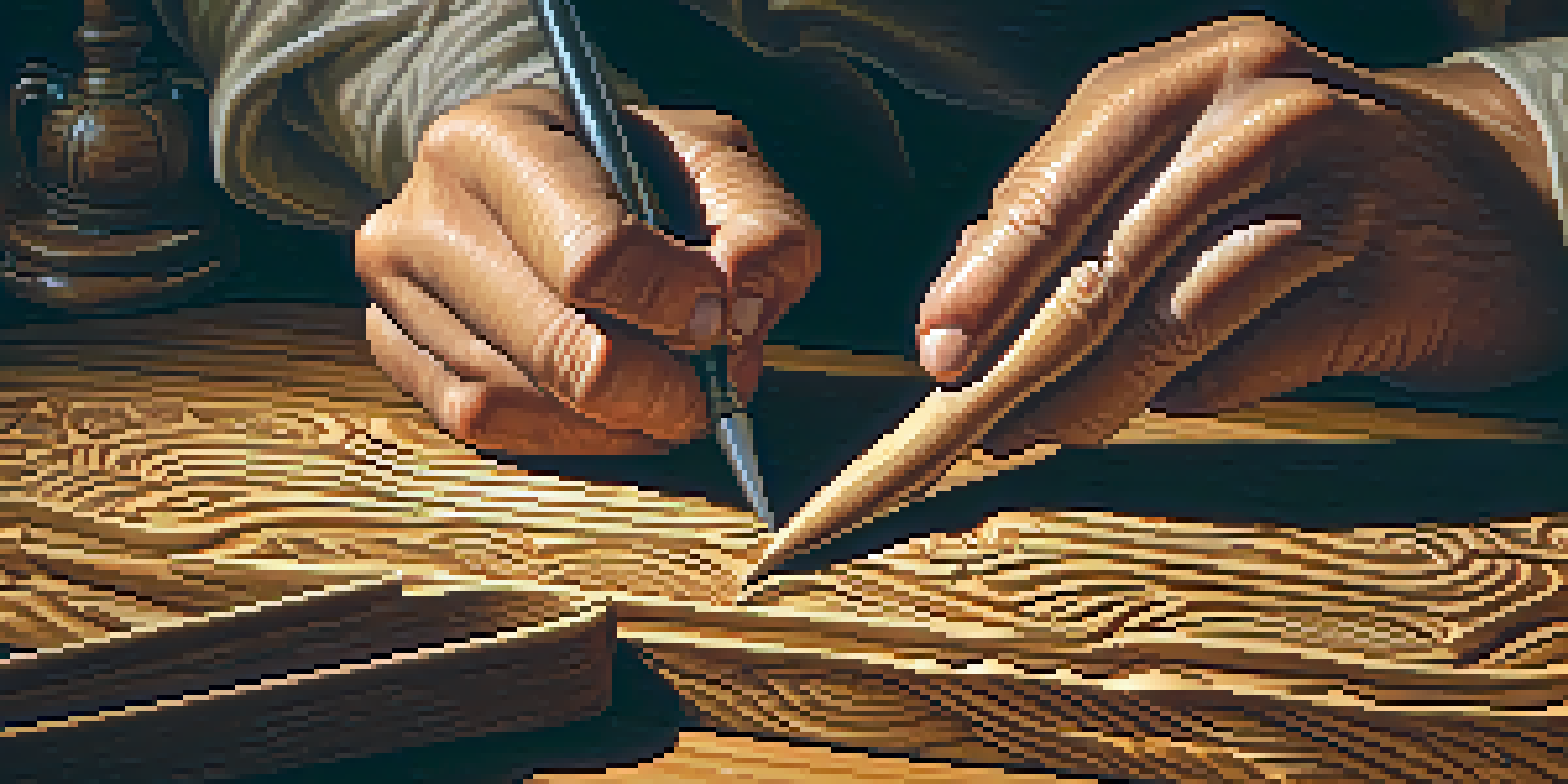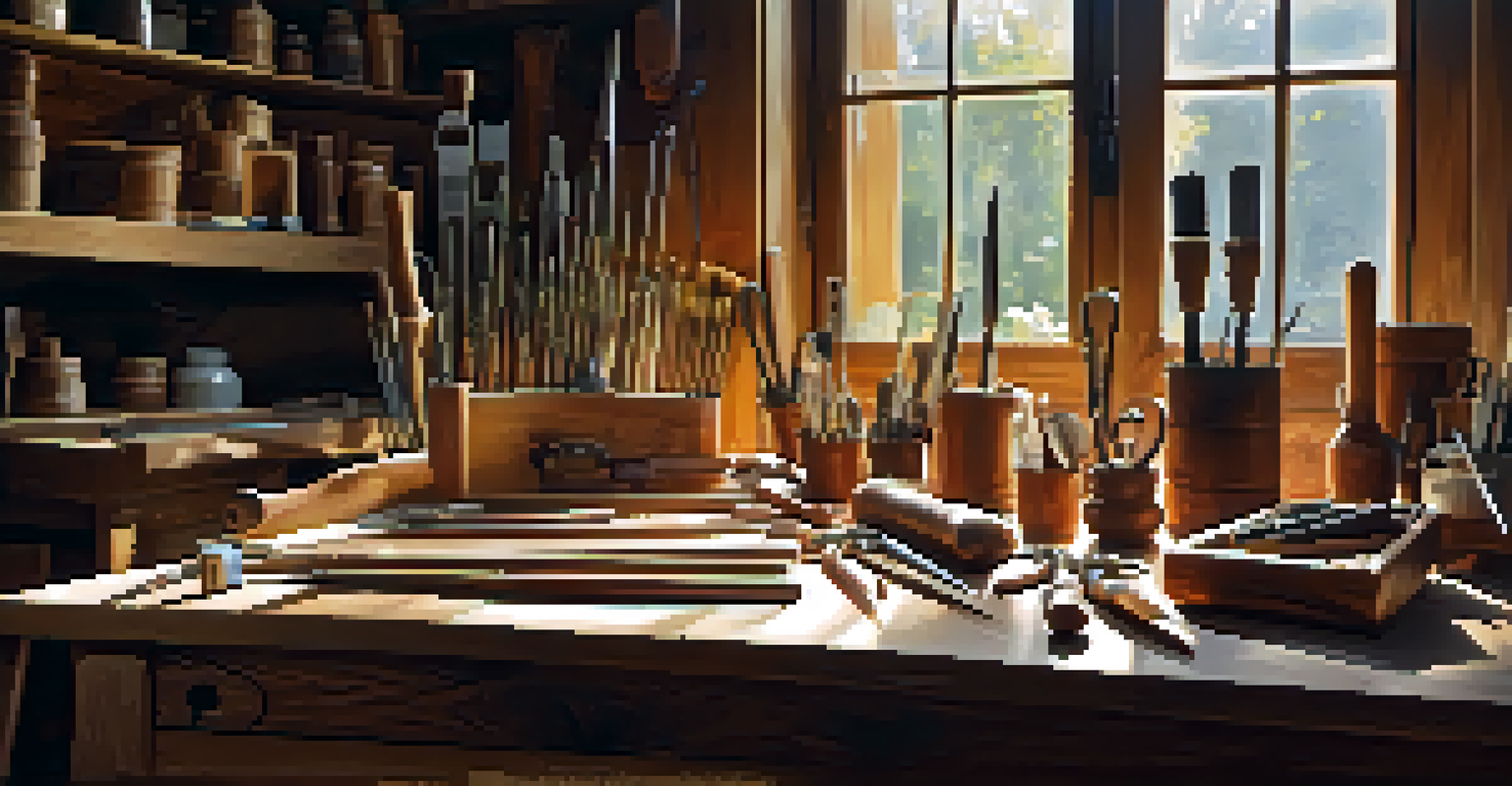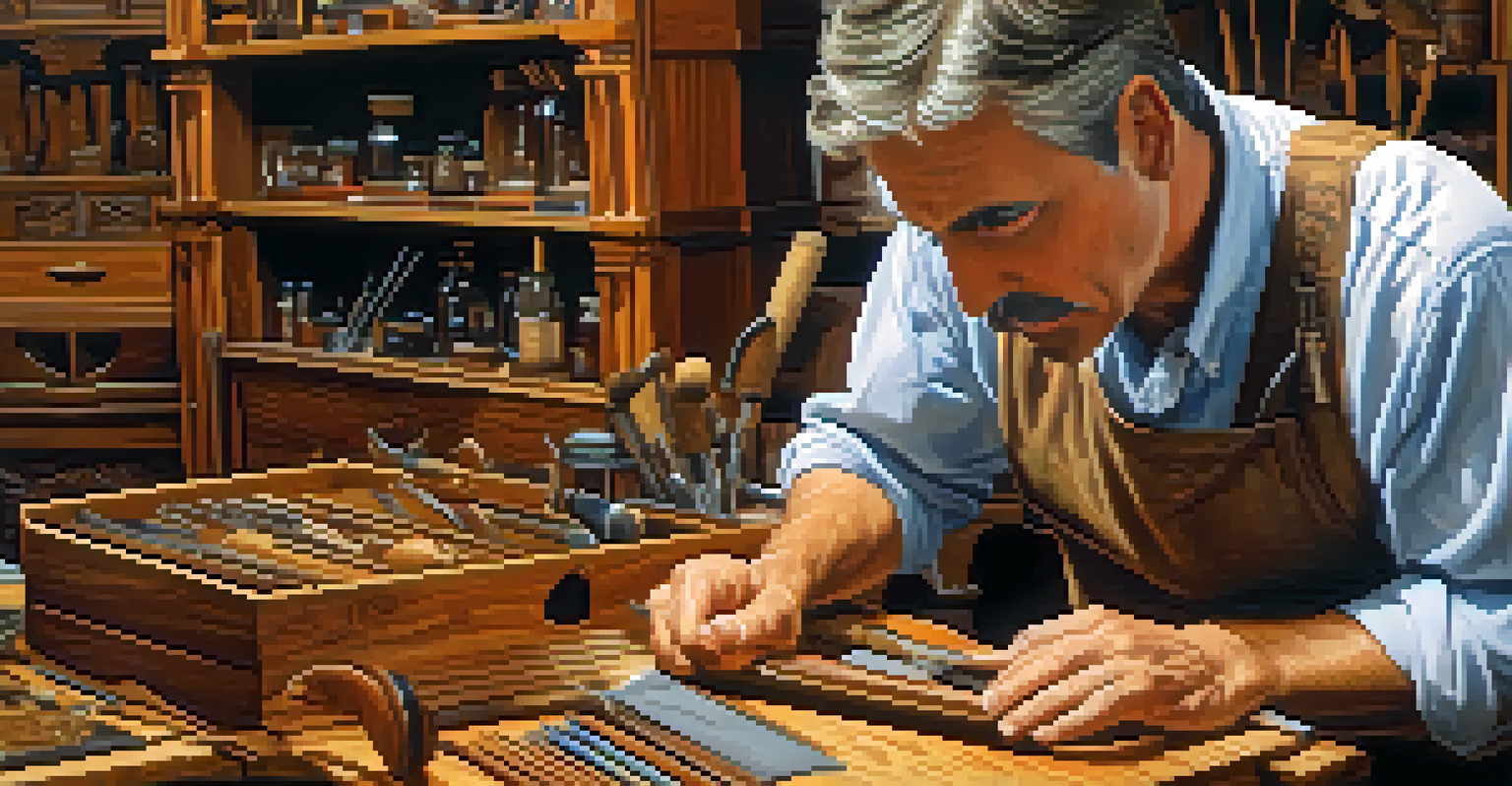Common Mistakes to Avoid When Carving Antique Furniture

Neglecting Proper Tools for the Job
Using the right tools is crucial when carving antique furniture. If you grab any old chisel or knife, you might end up doing more harm than good. For example, a dull chisel can lead to jagged cuts and damage the wood grain, which is often the charm of antique pieces.
The right tool for the right job is the key to success.
Investing in quality tools not only makes the job easier but also helps in achieving cleaner, more precise carvings. Think of it like trying to paint a masterpiece with a brush that's falling apart; it just won't yield the results you want. A sharp chisel, specific to the task, allows you to respect the integrity of the wood while showcasing your craftsmanship.
So, before you start your project, take a moment to gather the appropriate tools. A little preparation goes a long way in ensuring that your antique furniture remains beautiful and intact.
Ignoring the Wood's Grain and Characteristics
Every piece of antique furniture has a unique grain and character that tells its story. Ignoring these natural features can lead to a carving that looks mismatched or out of place. For instance, carving against the grain can result in splintering, which detracts from the antique's beauty.

When you take the time to understand the wood's grain, you can enhance its natural beauty instead of fighting against it. It’s like composing a song with the right notes; when you harmonize with the wood's characteristics, your carving will resonate beautifully. Pay attention to the direction of the grain and let it guide your cuts.
Use the Right Tools for Carving
Using quality tools ensures cleaner, more precise carvings and preserves the integrity of antique furniture.
In essence, respecting the wood's natural form allows your project to shine. The goal is to create a piece that feels cohesive with its history rather than one that seems forced or unnatural.
Rushing the Carving Process
Patience is key when it comes to carving antique furniture. Rushing through the process can lead to mistakes that are often irreversible. For example, hasty cuts can create uneven surfaces or accidental slips that ruin intricate designs.
Patience is not simply the ability to wait - it's how we behave while we're waiting.
Just like a fine wine, good carving takes time to develop. Each stroke should be deliberate, allowing you to assess the piece as you go along. Taking your time not only improves the quality of your work but also enhances your enjoyment of the process.
Remember, it's better to spend an extra hour perfecting a section than to find yourself regretting a rushed decision later. Embrace the journey and let your craftsmanship unfold at its own pace.
Overlooking Safety Precautions
Safety should always be a priority when working with tools and antique furniture. Many novice carvers overlook this aspect, leading to unnecessary accidents. For instance, not wearing protective gear like goggles can put your eyes at risk from flying wood shavings.
Taking simple safety measures can save you from serious injury. Just as you wouldn’t drive a car without a seatbelt, don’t carve without considering your safety. Maintain a clean workspace and always be aware of your tool's position to prevent slips.
Understand Wood's Unique Grain
Respecting the wood's grain and characteristics enhances the natural beauty of your carving and creates a cohesive piece.
Ultimately, prioritizing safety ensures that you can enjoy your project without fear of getting hurt. After all, the goal is to create beautiful furniture, not to end up with an injury.
Failing to Research the Antique's History
Understanding the history of the antique piece you’re carving can significantly influence your approach. Each design, style, and material has a story that can guide your carving decisions. For example, knowing whether your piece is from the Victorian era or the Arts and Crafts movement can affect your choice of patterns.
Researching the history helps you appreciate the craftsmanship that went into the original piece and can inspire your own work. It’s like studying the greats before creating your own masterpiece; you gain insights that can elevate your skills. Plus, it shows respect for the artisans of the past.
In short, a little research goes a long way. By understanding the context of your antique, you create a more meaningful and historically accurate carving.
Disregarding Finishing Techniques
Finishing touches are what truly bring your carving to life. Disregarding them can leave your piece looking unfinished or overly rough. For instance, not sanding down the surface can make an otherwise beautiful carving feel jagged and uncomfortable to the touch.
Think of finishing techniques as the icing on a cake; they enhance the overall presentation and experience. Whether it’s applying stain or varnish, taking the time to finish your piece properly can make a world of difference. It’s about elevating your work to a level that honors its antique roots.
Prioritize Safety and Preparation
Following safety precautions and practicing on scrap wood first can prevent accidents and costly mistakes during the carving process.
So, don’t skip this vital step! Ensure that your carving not only looks great but feels great too.
Neglecting to Practice on Scrap Wood First
Jumping straight into an antique without practice can lead to costly mistakes. Using scrap wood allows you to test your techniques and refine your skills before making irreversible changes to your piece. Imagine trying to play a musical instrument without practicing first; you wouldn’t expect to perform flawlessly right away!
Practicing on scrap wood also lets you experiment with different tools and carving styles. This exploration can unlock creative ideas that you might not have considered otherwise. Think of it as your rehearsal space, where you can make mistakes without the pressure of damaging something valuable.

Ultimately, taking the time to practice can save you from heartache and frustration. It’s all about preparing yourself for the real thing and ensuring your antique carving is a success.